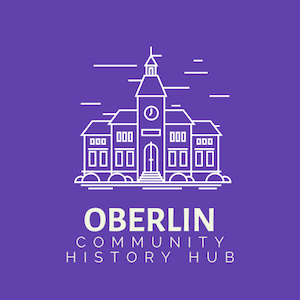Update #5 on the Oberlin Community History Hub
 After weeks of work, the Oberlin Community History Hub (OCHH) is nearly ready to go public! The OCHH consolidates existing historical materials related to the history of the town of Oberlin and Oberlin College; offers curated material which provides short and easy introductions to key figures or interesting questions in Oberlin’s past; and creates a platform for community members to contribute their own stories and images to a digital archive. As such, the site is less interpretive than aggregative.
After weeks of work, the Oberlin Community History Hub (OCHH) is nearly ready to go public! The OCHH consolidates existing historical materials related to the history of the town of Oberlin and Oberlin College; offers curated material which provides short and easy introductions to key figures or interesting questions in Oberlin’s past; and creates a platform for community members to contribute their own stories and images to a digital archive. As such, the site is less interpretive than aggregative.
Yet the OCHH makes several implicit arguments. First, it makes the case the Oberlin is place of historic significance that goes beyond the local. This small town and Oberlin College have played an outsized role in national and even world history, and that becomes apparent through even a quick perusal of the materials collected on the OCHH. Oberlin served as the training ground of many important American civil rights and women’s rights leaders; in 1900, fully a 1/3 of all African American college graduates in the country had attended Oberlin. The town served as a center and even a birthplace for important social reform organizations of the 19th and 20th century. Missionaries and graduates from Oberlin have had an impact across the world, especially in Asia.
The site also shows the ways in which Oberlin’s history helps us better understand American history more generally. Through digital projects which highlight the work of Oberlin community members and grads across the nation to Quick takes that contextualize stories about Oberlin’s past in more general terms—like using a discussion of Oberlin’s monuments as a launching pad to introduce readers to ways of thinking about monuments more generally—the site shows how the local can illuminate larger frameworks or histories.
Finally, this site also conveys that social history, community history, and the history of everyday life are important. In seeking contributions from the Oberlin community about their lived experience, the OCHH communicates that there is historical value in stories of people’s lives and that history is not just about big events or ideas.
As we built the OCHH, we had to make a lot of choices about what to include and how to design the site. Probably the most consequential decision we made was to focus on and build the site to support three different kinds of activities. The DISCOVER section of the site (and we are still considering whether it should be called “Explore” instead) allows users to search or to browse the materials we have collected. The QUICK TAKES section of the site features curated material created specifically for the OCHH. We decided on two different kinds of material, both modeled on the content of the Histories of the National Mall: short bios of key figures from Oberlin’s history and explorations of 500-600 words that use five items to answer a specific question. The CONTRIBUTION section of the site uses the Omeka plug-in to allow users to easily contribute images, stories, or documents to the digital archive. The site has other features—a map that shows items by geolocation, an Educator’s Corner that will eventually contain material for teachers—but the DISCOVER, QUICK TAKES, and CONTRIBUTE sections are the most important ones.
We’ve also had to decide which materials to try to consolidate on the site—we have focused for the most part on materials created in Oberlin about Oberlin, and thus are not linking, for example, all of the material out there about a figure like Mary Church Terrell. The goal of our site is to amplify the visibility of historical materials created locally as much as possible. Trying to enhance the searchability of materials led to our decision to catalogue different components of overarching digital projects as individual items rather than simply having one item for an entire digital project. The American Feminisms project, for example, is an umbrella for twenty smaller Oberlin-related digital projects; each of those has been created as individual items on our site. We are still making decisions about tags and tagging. The tagging function is vital to enhancing the searchability of the collection, but we don’t want to overwhelm a user with tags either.
Our next step is to begin evaluating the site, both in terms of content and usability. In the next week, we will be reaching out to several local people with expertise in local history or a relationship to a local historical organization to test the site with us over a zoom call. We will ask for feedback on the terms and categories the site is using, the effectiveness of the search tools, the content of the bios and Quick Takes, and the clarity of the site design. After we do individual meetings, we hope to hold a focus group where we can seek feedback from a broader segment of the community.